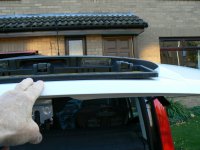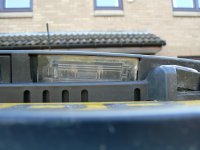The long term plan for driverless cars will be that they communicate with each other, so when the front car of a convoy brakes, they all do, not waiting for the gaps to close. Until we get to that, they will react, as will the next one, etc., with firm braking. A car diving into a gap will cause a chain reaction, and if they then pass through the gap, perhaps from lane 2 through to an exit, the driverless cars will then accelerate to close the gap again. For a while, could be fun playing with them, rudely awakening the occupants from their slumber, reading, etc.
Is this the same Tesla that drove into the side of a truck, killing the occupant who'd put their trust in autopilot?
That event was mostly due to driver error.
As far as I understand the story, the car was on a highway, not a freeway, so like our A-roads, has intersections. Tesla specify these are not suitable for autopilot, and later versions of autopilot will not operate on sections of these roads with junctions/intersections. (See YouTube 'Tesla Driver' for many videos of autopilot not working for more than a few minutes at a time)
Driver was on a highway. American truck without underrun guards crossed the path of the Tesla. Tesla has a data recorder, which showed the car braked very firmly, then accelerated under the truck. This was as the cab passed, it braked, then as the space under the trailer passed, the Tesla radar saw a clear road again. Data recorder showed the driver did not react, at all. My guess he was asleep.
Newer Teslas have the radar a little higher I believe, and they then caught up with European autopilot systems (Mercedes S-class) and will squeak, a lot, if the driver lets go of the wheel for more than a few seconds. If no response, it will bring the car gently to a stop. Should be exciting in lane 3 of a motorway.
Autopilot will struggle with narrow country lanes. Humans can find firm grass verges, field entrances, etc., and pass with care. Self-driving can only be programmed with permanent passing places, as ad-hoc ones may be soft at times. Fully autonomous cars will know each other are coming, and sit and wait for as long as necessary, but when meeting any non-communicating car it will just sit and wait for the 'driver' to take over.
Autonomous cars will still need an occupant capable of taking over, so presumably the 'driver' will still need a licence. We think standards are poor now, wait until drivers only have to take over rarely, that'll be entertaining.





